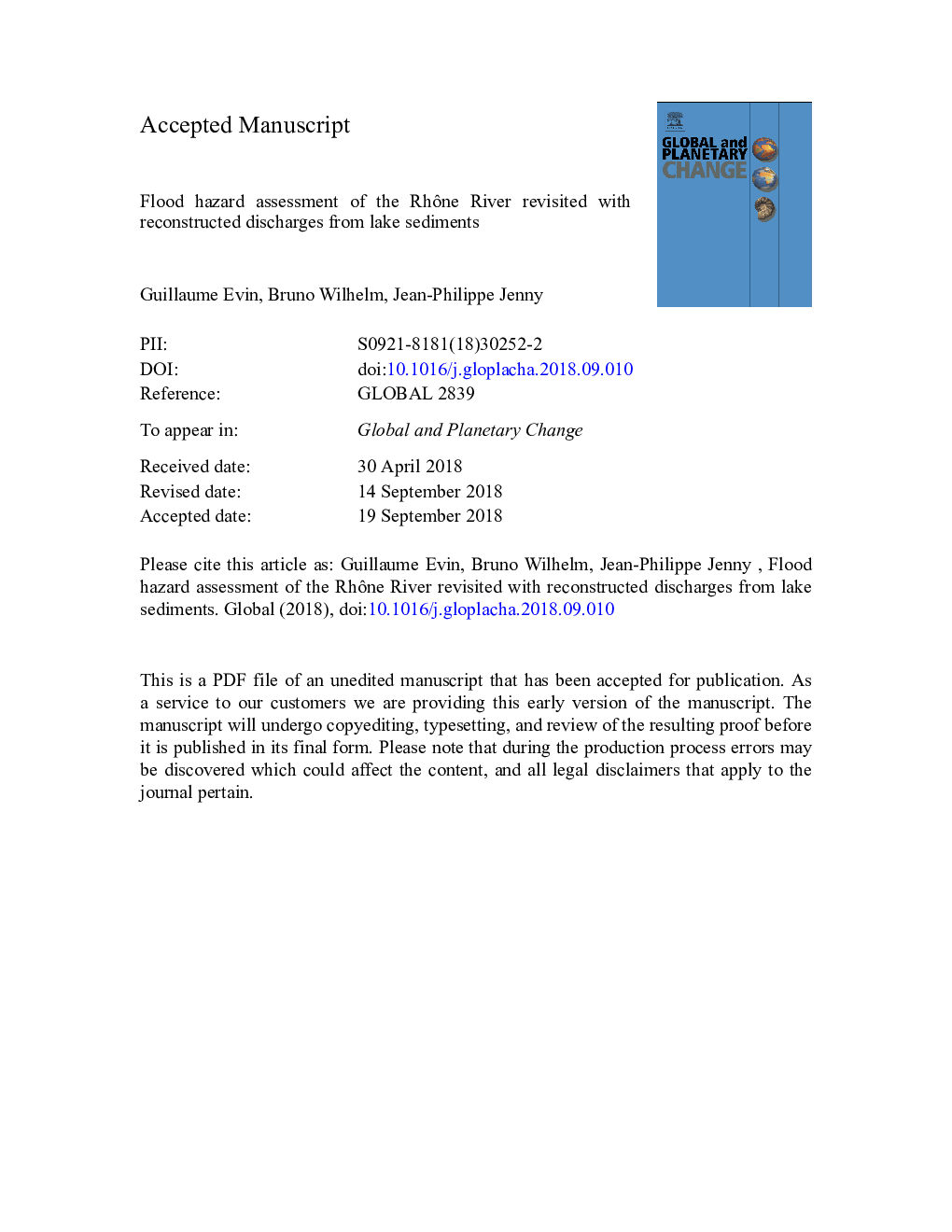| Article ID | Journal | Published Year | Pages | File Type |
|---|---|---|---|---|
| 11025030 | Global and Planetary Change | 2019 | 34 Pages |
Abstract
A Bayesian approach is adopted in order to properly treat the non-systematic nature of the reconstructed flow data, as well as the uncertainties related to the reconstruction method. While this methodology has already been applied to reconstruct maximum discharges from historical documents, tree rings or fluvial sediments, similar applications need to be tested today on open lake sediments as they are one of the only archives that provide long and continuous paleoflood series. Reconstructed sediment volumes being subject to measurement errors, we evaluate and account for this uncertainty, along with the uncertainty related to the reconstruction method, the parametric uncertainty, and the rating-curve errors for systematic gauged flows by propagating these uncertainties through the modeling chain. Reconstructed maximum discharges appear to largely overcome values of observations, reaching values of approximately 2,600, 4,200, 2,450 and 2,500â¯m3/s in 1689, 1711, 1733 and 1737 respectively, which correspond to historically-known catastrophic floods. Extreme quantiles are estimated using direct measurements of maximum discharges (1853-2004) only and then combined to the sedimentary information (1650-2013). The comparison of the resulting estimates demonstrates the added value of the sedimentary information. In particular, the four historical catastrophic floods are very unlikely if only direct observations are considered for quantile estimations.
Related Topics
Physical Sciences and Engineering
Earth and Planetary Sciences
Earth-Surface Processes
Authors
Guillaume Evin, Bruno Wilhelm, Jean-Philippe Jenny,
